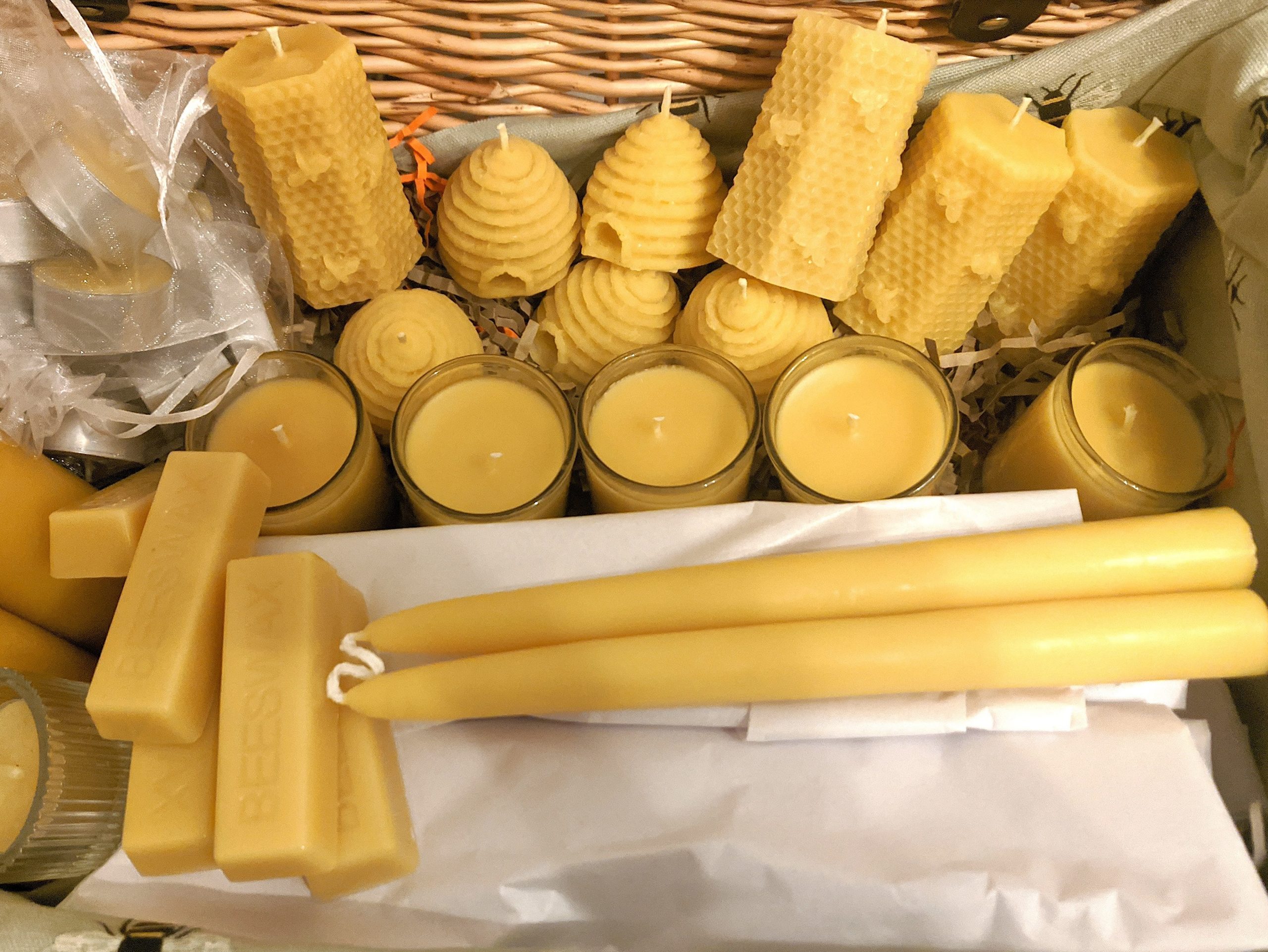Our honey is collected by the bees in boxes we call ‘supers’. These sit above the main brood area, separated by a wire grill queen excluder. This means the queen only raises young bees in the lower ‘brood’ box, while the bees store honey in the supers. The cleanest brightest wax comes from the supers, as brood wax will be coloured with pupal cases and the passage of tens of thousands of bee feet – there are up to 70,000 bees in the colony in mid summer.
When the honey is ripe, meaning the water content is below 20%, the bees cap over the cells with wax to preserve the honey until it is needed. To extract the honey, we ‘uncap’ the combs using a heated knife, so that the honey can be extracted in a rotating extractor.

The wax cappings we cut off are carefully collected and washed in soft water to remove any honey residue. The colour of the wax varies from almost white, through yellow to brown. The colour largely depends on what the bees have been collecting from – as an example, dandelion produces a very yellow, almost orange wax. Also, older wax tends to be darker.
If we are making candles for entering in a honey show, we will carefully pick out the lightest, cleanest cappings and set them to one side for separate processing. If we are just making wax blocks to use later in candle making we will load all the cappings into a mesh bag and place in a slow cooker with some water.
Beeswax melts at around 64C and floats on water. Once all the cappings have melted, the mesh bag is lifted out, removing any honey residue, dirt or even bits of bee! At this stage, the wax has to be carefully monitored as if it is allowed to heat above 85C it will start to discolour. This is irreversible and that batch will be spoiled. The wax is now left to cool and set until there is a solid cake floating on the water.
The underside of the wax block will have a small amount of dirt stuck to it. This can sometimes be scraped off or the wax might have to be filtered a second time. Once clean, the wax blocks are stored ready for making into candles.
The whole process takes a long time and no matter how careful you are, wax spatters appear randomly around the kitchen. Because of the cleaning required after wax making, we generally try and process as much wax as we can in one go. The wax cappings from an entire super box of frames may only yield 1/2 lb of usable wax which only makes a few candles. It is a labour of love and is why you should cherish your pure beeswax candles 🙂
Note: The wax from the brood frames is not wasted, even though it is too dark to use for candle making. The wax is removed by heating with steam, collected into blocks and traded in to beekeeping suppliers in exchange for fresh clean wax foundation for new frames.